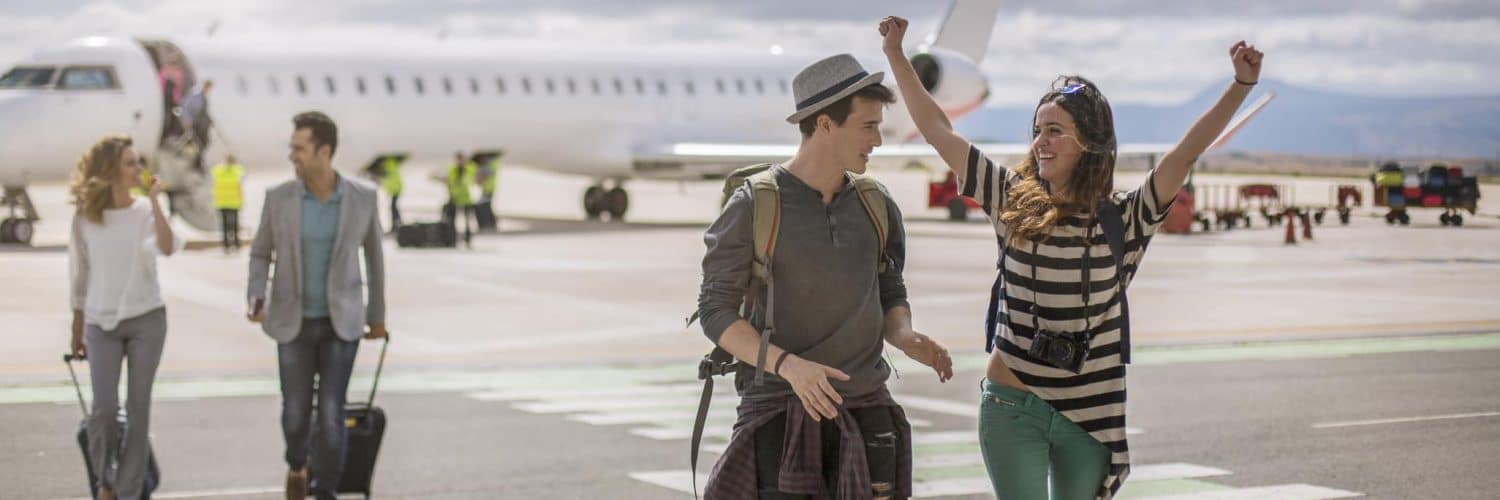Travel season is upon us, and whether flying for work or pleasure, air travel can often be a stressful endeavor, due in part to the germs many of us pick up while on the plane. The last thing you want is to land at your vacation or meeting destination and develop a cold (or worse!) within a day or so of arrival. In order to make your flight, and the days following, as healthy and enjoyable as possible, keep these tips in mind when flying.
Be prepared. Talk to your doctor before you leave for your trip to ensure you are healthy enough to travel and are up-to-date on appropriate immunizations.
Consider a mask. While no longer mandated, the Centers for Disease Control and Prevention recommend wearing a mask while traveling, especially if at higher risk for illness or in tight quarters, such as a bus or airport jetway. It is also a good idea to wear one when boarding an airplane, before the ventilation system is on.
Be aware of those around you. Many experts confirm that the quality of air circulating in the plane is very good due to frequent replenishment with outside air, good ventilation, and effective filters (when turned on!). However, if you happen to be sitting next to or near someone (within two rows or seat lengths) who is coughing, sneezing, or otherwise under the weather, you are at a higher risk of sharing their germs. While filters are good, they may not catch all germs before you come into contact with them. In addition to wearing a mask, consider asking a flight attendant if you can move your seat to avoid contact with the sick passenger. If this isn’t possible, other alternatives that can help include tipping your seat back if the sick person is in front of you or avoiding putting your seat back if they are behind you. Also try pointing the air vent above your seat straight down over you to ensure you continue to breathe in clean air.
Stay hydrated. While the overall air quality is generally good, it’s important to remember that airplane air tends to be dry, so it’s critical to stay hydrated and sip water throughout your flight. This helps keep your nasal passages and mucous membranes moist, which may help you be more comfortable.
Pack healthy snacks. It is definitely tempting to load up on overpriced candy and salty snacks before boarding your flight, but save your health and your wallet by thinking ahead. Pack TSA-friendly items like nuts, whole or dried fruit, granola bars, chopped-up veggies, and similar snacks. These will help keep you full without the extra sugar and sodium that can make you feel less than great when you land.
Carry disinfectant and sanitizer. Although you may not need to worry about germs in the air on your flight, you should be cautious about surfaces that you touch on the plane, including tray tables, seat pockets (and any magazines in them), touch screens, arm rests, seats, and surfaces in lavatories. On any given day, hundreds of passengers may have taken to the sky on your plane, deplaning at their destination but leaving their germs behind. Unfortunately, the advanced filter systems that clean the air don’t help much when it comes to surface germs. To avoid getting sick, wash your hands frequently or use sanitizer if you’re not near a sink. It’s also a great idea to carry sanitizing or disinfecting wipes to wipe down surfaces you may come into contact with during your flight. And finally, bring your own magazines, pillow and blanket onboard, and avoid putting personal items like water bottles or sunglasses in the seat pocket to further reduce the chances of taking germy souvenirs off the plane with you.
Keep moving. While it’s very easy to settle into your seat when your flight offers a movie marathon of your choosing, it’s critical to move around while in the air to improve circulation and reduce the risk of deep vein thrombosis (blood clots). This is especially important on flights longer than five hours. In addition to standing to stretch and walking around the cabin once an hour or so, there are a number of easy exercises you can do from your seat. These include lifting your knees in place; rotating your ankles, neck and wrists in circles; and doing calf raises in the aisle or at the back of the plane. For more ideas, check out these resources from ACE Fitness and the Cleveland Clinic. Wearing compression socks can also help with circulation on long-haul flights.
Clear your ears. For many of us, the changes in cabin pressure during take-off and landing can lead to ear discomfort or feelings of stuffiness, which tends to go away shortly thereafter. This can often be prevented or easily corrected by yawning, swallowing, chewing gum or sucking on a lozenge. However, it’s possible that this discomfort can escalate into pain that can last 30 minutes or longer after landing. This condition, called barotrauma or “airplane ears,” can cause pain, hearing loss and other symptoms, especially in people with sinus infections, allergies or recent surgery. Staying hydrated and gently clearing your ears by pinching your nostrils, closing your mouth and attempting to blow air out of your nose may help. Talk to your doctor to discuss if you may be at risk and whether certain medications may help prevent or treat this condition.
Traveling can be a great adventure, but between time changes, unpredictable schedules, atypical food options, and more, it can throw our bodies for a loop. Starting off on the right foot during your flight can help you stay healthy while traveling, but don’t forget to stay active once you arrive at your destination as well. Bon voyage!



